Lecanographa amylacea (Pers.) Egea & Torrente (trentepohlioid)
Bibl. Lichenol., 54: 122, 1994. Basionym: Lichen amylaceus Ehrh. ex Pers. - Plant. Crypt. Exsicc.: 303, 1793.
Synonyms: Lecanactis amylacea (Pers.) Arnold; Lecanactis illecebrosa (Dufour) Fr.; Lecidea farinosa (Ach.) Röhl. non H. Magn.; Opegrapha illecebrosa Dufour; Schismatomma illecebrosum (Dufour) A. Massal.
Distribution: N - Ven (Nascimbene & Marini 2010), TAA (Nascimbene & al. 2007b), Lig (Giordani & al. 2009, Giordani & Incerti 2008). C - Tosc (Fačkovcová & al. 2024), Laz (Ravera & al. 1999, 2000, Munzi & al. 2004, 2007), Sar (Rizzi & al. 2011, Di Nuzzo & al. 2022). S - Camp (Ravera & al. 2021), Pugl (Durini & Medagli 2004), Bas (Potenza 2006, Potenza & al. 2010, Potenza & Fascetti 2012), Cal (Puntillo 1996, Incerti & Nimis 2006, Brackel & Puntillo 2016), Si (Nimis & al. 1994, Ottonello & al. 2011).
Description: This lichen appears in two very different morphotypes, depending on the photobiont, this description refers to the form with a trentepohlioid photobiont (corresponding to the type): Thallus crustose, episubstratic, continuous to rimose, thick, chalky white to grey-white, farinose, usually with numerous, pale brown, c. 0.2 mm wide granular flecks, sometimes delimited by a discontinuous, dark prothalline line. Apothecia not always present, round to irregular in outline but never lirelliform, 0.2-0.6 mm across, more or less immersed in the thallus, with a concave to slightly convex, black but densely white-pruinose disc and a thin, usually epruinose, black, persistent proper margin. Proper exciple black, extending below the hymenium; epithecium brown; hymenium colourless, 65-85 µm high, I+ blue, then reddish; paraphysoids sparingly branched and anastomosing, 1-1.5 µm thick, with poorly swollen, brown-tipped apices; subhymenium pale brown, 30-40 µm high; hypothecium dark brown to black. Asci 8-spored, narrowly clavate to cylindrical, fissitunicate, the apex with a narrow, K/I± pale blue apical dome penetrated by a small ocular chamber surrounded by a small, K/I+ dark blue, ring-like zone (Grumulosa-type of Egea & Torrente 1994). Ascospores 3(-4)-septate, hyaline, fusiform, straight or slightly curved, (14-)17-25(-28) x (2-)3-3.5 µm, with a thin gelatinous perispore. Pycnidia rare, immersed, globose, black. Conidia hyaline, bacilliform, straight, 5-7 x 1-1.2 µm. Photobiont trentepohlioid. Spot tests: thallus K-, C-, KC-, P-, UV-; medulla UV+ white, K/UV–. Chemistry: an unknown UV+ substance in the medulla.Note: a mild-temperate, mainly western lichen found on isolated, old deciduous trees with acid bark, especially oaks, on faces seldom wetted by rain. According to Ertz & al. (2018), the sorediate Buellia violaceofusca G. Thor & Muhr seems to be a trebouxioid photomorph of this species, the fungus, depending on the photobiont type, changing the morphology and the reproduction strategy.
Growth form: Crustose
Substrata: bark
Photobiont: Trentepohlia
Reproductive strategy: mainly sexual
Most common in areas with a humid-warm climate (e.g. most of Tyrrenian Italy)
In underhangs rarely wetted by rain
Commonnes-rarity: (info)
Alpine belt: absent
Subalpine belt: absent
Oromediterranean belt: absent
Montane belt: absent
Submediterranean belt: extremely rare
Padanian area: absent
Humid submediterranean belt: very rare
Humid mediterranean belt: rare
Dry mediterranean belt: absent

Predictive model
Herbarium samples
Growth form: Crustose
Substrata: bark
Photobiont: Trentepohlia
Reproductive strategy: mainly sexual
Most common in areas with a humid-warm climate (e.g. most of Tyrrenian Italy)
In underhangs rarely wetted by rain
Commonnes-rarity: (info)
Alpine belt: absent
Subalpine belt: absent
Oromediterranean belt: absent
Montane belt: absent
Submediterranean belt: extremely rare
Padanian area: absent
Humid submediterranean belt: very rare
Humid mediterranean belt: rare
Dry mediterranean belt: absent

Predictive model
| Herbarium samples |
 INDEX FUNGORUM
INDEX FUNGORUM
 GBIF
GBIF
 DOLICHENS
DOLICHENS



